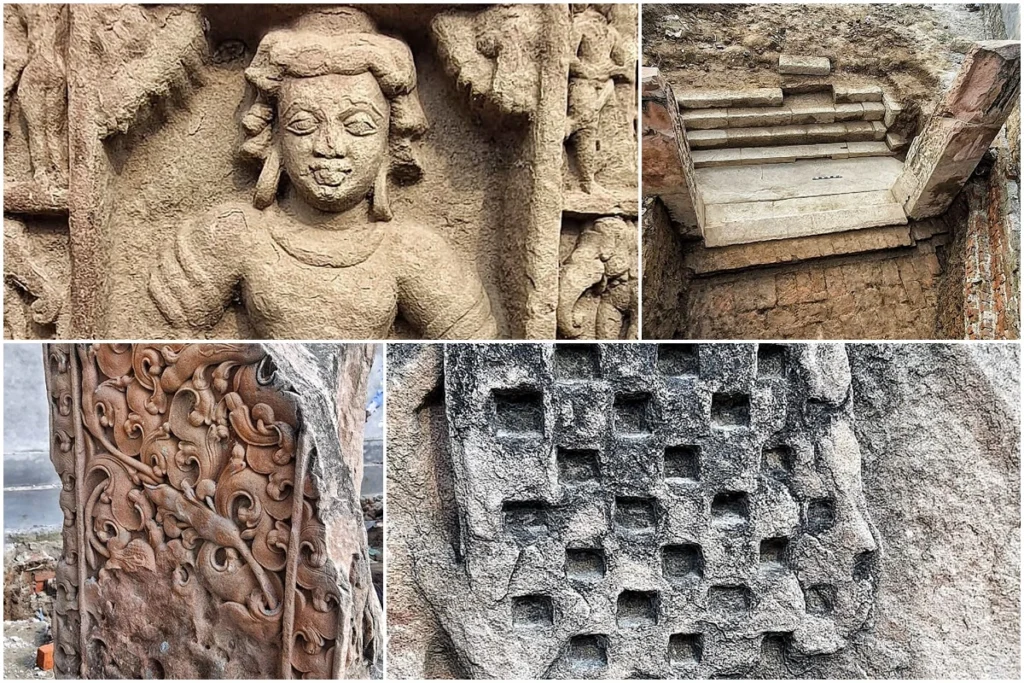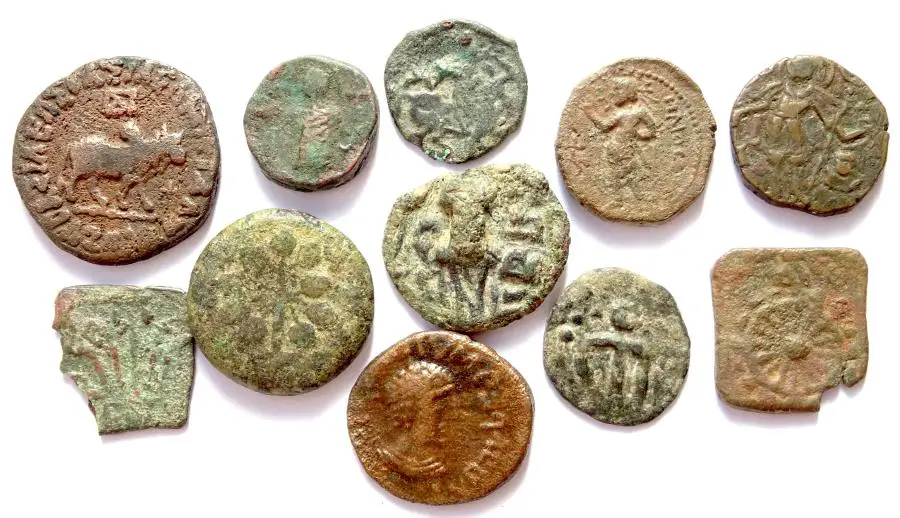Archaeological evidence is vital in delving into some mysteries surrounding Indian historical events, offering crucial insight into the past. Through excavations, inscriptions, artefacts, and other traces of the past, archaeology significantly contributes to our understanding of India’s vast cultural heritage. This article examines, What are Archaeological Sources of Indian History, the diverse kinds of sources, noteworthy findings, as well as the difficulties to be faced when interpreting these sources.
Introduction
Archaeology is an instrument for time travel, allowing us to explore the ancient past and learn more about civilizations long before us. When researching Indian history, the archaeological records give concrete evidence to support traditional writing records, giving the complete perspective.
Definition of Archaeological Sources
Archaeological literature refers to the artefacts and material remains left behind by past human societies. They are discovered by careful digging, analysis, and interpretation. These include artefacts, structures, tools, inscriptions, pottery, burials, coins, and art and architecture, for instance.
Importance of Archaeological Sources

Archaeological resources are essential for assembling all the pieces that make up the Indian past. They provide evidence that either supports or discredits historical accounts. Through studying these documents, historians can gain insight into the various aspects of Indian life, such as economic structures, social structures, religious practices, and technological advances.
Types of Archaeological Sources

- Excavations and discoveries uncover hidden cities, settlements, and structures, providing a glimpse into ancient city design, architecture, and everyday life. The most well-known sites like Harappa, Mohenjo-Daro, and Hampi have provided remarkable insight into the early Indian civilizations.
- Epigraphy and Inscriptions Made of metal, stone, or other durable materials provide critical historical data. Inscriptions can be found in royal decrees, religious texts, and administrative documents, which help historians understand the social and political context of the past in India.
- Coins along with Numismatics The ancient coins provide valuable insight into economic networks, trade networks, and the dynasties that ruled in different times. Numismatics lets historians study the development of currency and the monetary systems of India.
- Architecture and Art, The architectural and artistic creations from the past of India depict a visual image of the aesthetic and cultural values of the day. Temples, stupas, paintings, and sculptures offer glimpses of religious practices, icons, and artistic techniques.
- Pottery, as well as Ceramics Pottery, fragments as well as ceramics, are valuable markers for determining the age of archaeological sites. They provide insight into the latest technological advances, trade routes, and the daily life of the domestic.
- Instruments and Weapons Tools and weapons are evidence of technological advancements and the craftsmanship and tactics used in military operations throughout different periods.
- Tombs and Burials Burial sites and tombs are a wealth of information regarding burial practices, social hierarchies, and the religious beliefs that were prevalent in past India.
- Environment as well as Geological Evidence fossils, sediments, and geochemical data aid in reconstructing the ancient landscapes, patterns of climate, and the evolution of biodiversity, and provide insights into the environment of the past.
Challenges in Interpreting Archaeological Sources
Interpreting the archaeological evidence has the same set of difficulties. The artefacts preserved over time could be insufficient or inaccurate, resulting in gaps in our knowledge. In addition, deciphering ancient scripts, understanding the significance of cultural symbols, and determining the origins of objects requires knowledge and expert analysis.
Role of Archaeology in Indian History
Archaeology has played an integral part in changing our perception of Indians in the past. It has proven that ancient civilizations existed, challenged conventional stories, and provided fresh perspectives on India’s past social, cultural, economic, and political features. Combining archaeological discoveries alongside other sources from the past provides a more complete and nuanced view of the past of India emerges.
Archaeology is also a significant factor in the conservation and preservation of historic sites, ensuring that the next generation can enjoy and benefit from the tangible evidence of old India.
Conclusion
Archaeological resources are invaluable windows into India’s past, enriching our knowledge and understanding of ancient civilizations. From inscriptions, excavations, and coins to art, they provide tangible evidence in addition to written documents. With the unrelenting efforts of historians and archaeologists, We can discover the history of India’s rich cultural heritage.
While we work to uncover new information and refine ways of interpreting, archaeology is an essential tool for unravelling all the mysteries of India in the past.
FAQs
1. Are archaeological sources more reliable than written records for studying Indian history? Archaeological sources and written records complement each other. While written records provide valuable historical accounts, archaeological sources offer tangible evidence that confirms or challenges those accounts, creating a more comprehensive understanding of the past.
2. How do archaeologists determine the age of artefacts? Archaeologists use various methods to determine the age of artefacts, including carbon dating, stratigraphy (study of layers), and comparative analysis with known dated objects.
3. What are some famous archaeological sites in India? India is home to numerous famous archaeological sites, including the Indus Valley Civilization sites of Harappa and Mohenjo-Daro, the ancient rock-cut caves of Ajanta and Ellora, and the majestic temples of Khajuraho.
4. Can anyone participate in archaeological excavations? Participation in archaeological excavations usually requires specialized training and expertise. However, some organizations offer opportunities for volunteers to assist in fieldwork under the guidance of professionals.
5. How does archaeology contribute to cultural heritage conservation? Archaeology helps identify, document, and preserve cultural heritage sites and artefacts. Through careful excavation, restoration, and conservation efforts, archaeologists ensure that our rich heritage is safeguarded for future generations.
Important Battles in Indian History

[…] the formal head of state, and plays a vital function in the operation of government. Although the powers of the President are restricted, there are instances where impeachment proceedings may be brought in order to […]